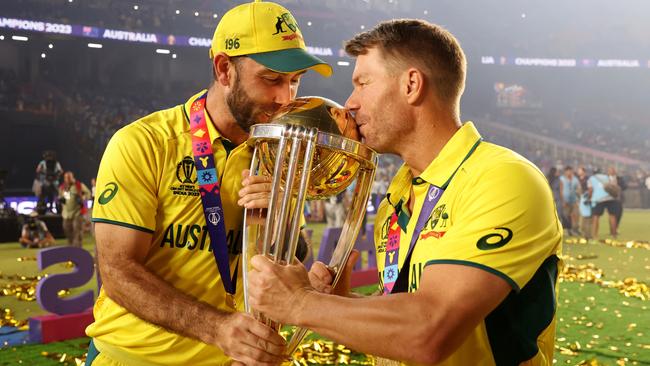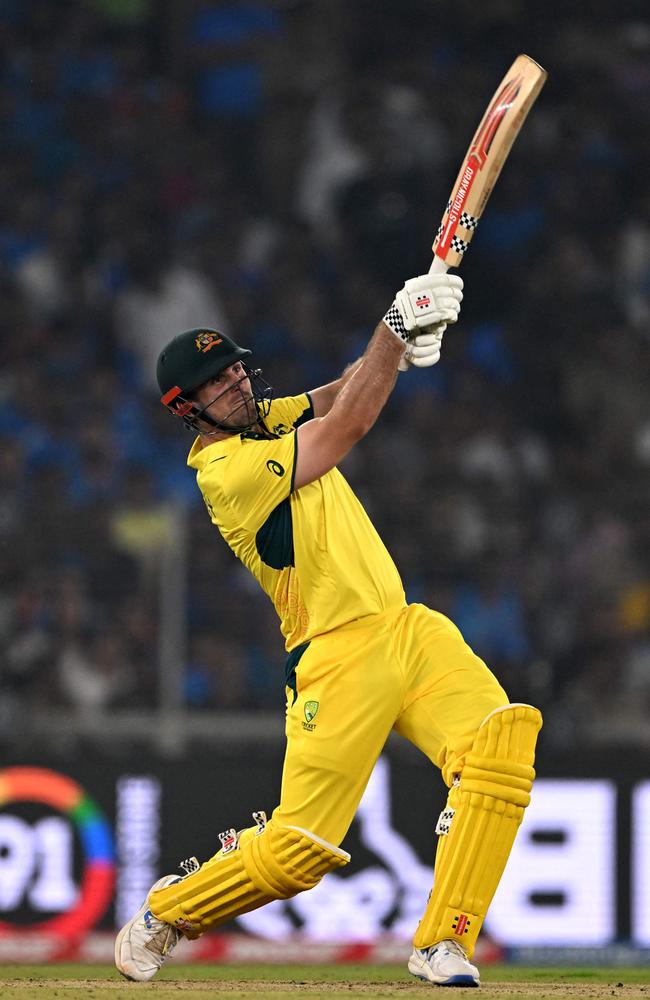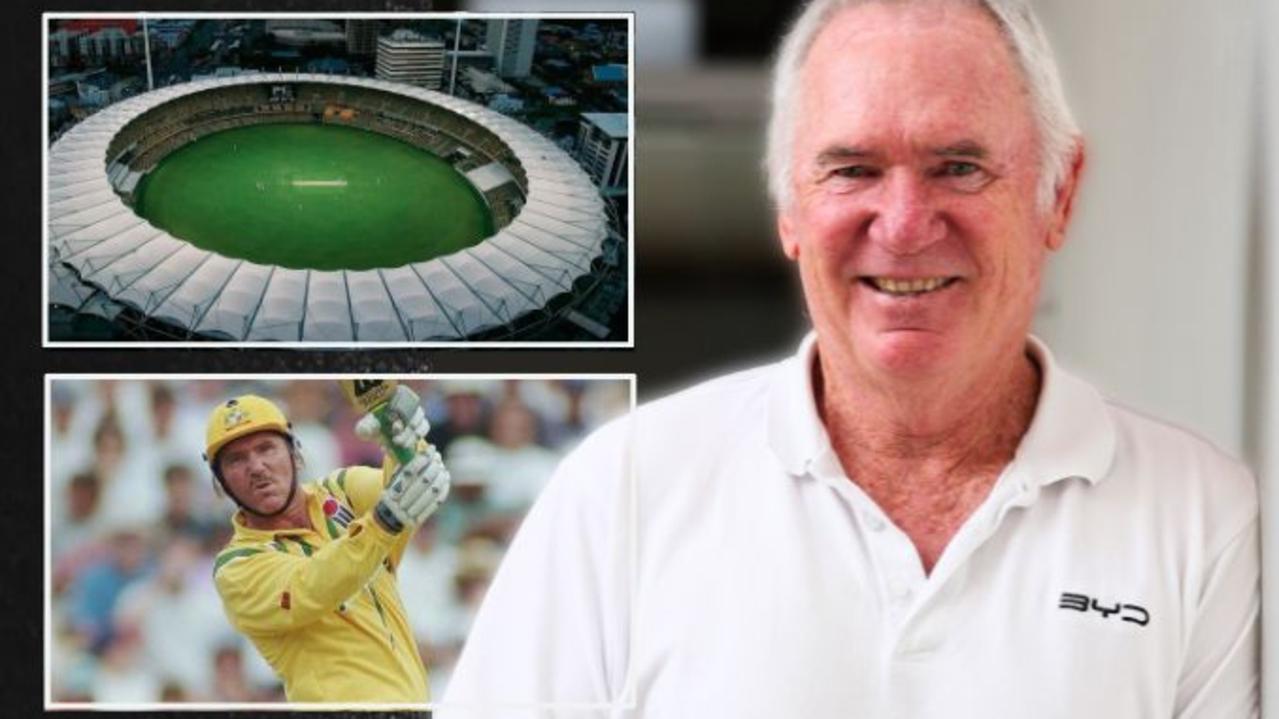The 10 courageous all-or-nothing gambles behind Australia’s World Cup win
Australia was on the ropes after being smashed in its opening two World Cup games. From there, every post was a winner. See the big calls behind the famous victory.

Cricket
Don't miss out on the headlines from Cricket. Followed categories will be added to My News.
Critics have labelled Australia’s triumph in India as the ‘best ever’ World Cup win, partly because the epic heist would never have happened if not for 10 courageous all-or-nothing gambles.
Australia was on the ropes after being smashed in its opening two games but from there every rein the side pulled was the right one.
Selectors deserve enormous credit for faultless decision-making under immense pressure.
At the start of the tournament, there were issues with the Australian line-up everywhere you looked, from injury to form and balance issues, not to mention the side was virtually one more loss away from elimination.
But with calmness and confidence, Australia’s on-field and off-field teams weathered the storm and are now World Cup champions.
These are the rolls of the dice that saved Australia from imminent embarrassment and booked it a special place in history.

1. CARRYING TRAVIS HEAD
Some selection calls are easy, some take courage. The decision by selectors to stick with an injured Travis Head and carry him in the squad for half the tournament until his broken hand healed was as brave as it gets. If Australia had crashed unceremoniously out of the tournament with Head still watching on from his lounge room in Adelaide and the team a player short, the knives would have been out for George Bailey and his panel. It almost happened when Australia was staring down the barrel of a third consecutive loss to start the tournament when Sri Lanka was 0-125 batting first in Lucknow. However, Bailey and coach Andrew McDonald were prepared to be knocked out of the World Cup to win it, knowing that without Head in the line-up at the business end, they couldn’t challenge for the title in any case. It will go down as one of the great selection calls of all time after Head’s man-of-the-match heroics in the semi-final and the final.
2. BOWLING FIRST IN THE FINAL
Former Australian captain Mark Taylor said he would have batted first in the final if he had won the toss but captain Pat Cummins thought differently. No matter what the stats might say about batting second in Ahmedabad, it was still a brave call to elect to chase in a final. Even Indian captain Rohit Sharma said at the toss he would have batted first because of how crucial runs on the board were when everything was on the line in a final. Cummins and Australia had done their homework and it earned them perhaps the greatest World Cup triumph. Cummins’ knew that at Ahmedabad fast bowlers had taken 24 wickets at an average of 26.16 per wicket during the day bowling first, as opposed to just 11 at 47 in the second innings. Similarly, the success of spinners at the venue crashed from a success rate of 14 wickets at 25 in the first innings compared to just eight at 55 bowling at night when the dew usually set in. At this World Cup, the chasing team had won three out of the four games at the stadium. Hats off to Cummins on the gamble of the century.

3. CUMMINS AS CAPTAIN
Australia decided to appoint Cummins as Aaron Finch’s 50-over captaincy successor 13 months ago but selectors could have been forgiven for contemplating a change of heart after the Ashes series. In the last three Tests against England when the heat was on, there was enormous pressure on the fast-bowling skipper and some of his decisions were put under the microscope. Did Cummins really need the burden of ODI captaincy on top of the Test job? Would he even make Australia’s best ODI XI in India if he wasn’t captain? Not to mention he was nursing a wrist injury that kept him out of most of Australia’s World Cup warm-up matches. The show of faith was a stroke of genius and Cummins’ leadership was crucial in Australia winning the tournament.
4. NO SECOND SPINNER
When Ashton Agar was ruled out of the squad on the eve of the tournament with a calf injury, selectors decided they would roll the dice and replace him with specialist batsman Marnus Labuschagne rather than usher in a second spinner to better balance the squad. In part, selectors had little choice but to bolster the batting given they had committed to picking Head, who wouldn’t be available until the second half of the tournament. However, it was also an awareness from selectors that Labuschagne’s hustle and bustle and heavy-duty batsmanship was going to be worth more than a second spinner. It doubled as a huge endorsement in all-rounder Glenn Maxwell’s ability to answer the call and step up as a frontline spinner – a faith he repaid in spades.
5. MARNUS OVER MARCUS
This selection decision before the semi-final and then the final was about as tight as it gets. Do you prefer the Test batting ability of Labuschagne on wearing and doctored wickets? Or do you go with the versatility of all-rounder Marcus Stoinis, who produced some clutch moments for Australia in its 2021 T20 World Cup triumph? The call to go with Labuschagne was again proven to be genius and Australia may not have won the final without him. The pressure situation on a tricky wicket, when the Indian bowlers were hooping it around, demanded an innings of patience and class and Labuschagne delivered in the match-winning partnership with Head. Not to mention he saved bulk runs with his fielding in the final stages of the tournament.

6. THREE QUICKS IN INDIA
By Cummins’ own admission before the tournament, Australia had invested a lot of preparation and planning on going in with an all-rounder-heavy team in Indian conditions. The dream was for Cameron Green to be firing on all cylinders. He would provide the dual benefit of helping Australia bat down to No.9 and be able to take big wickets as a frontline quick. When it came down to the crunch, Australia, like it did in the World Twenty20 in 2021, threw that thinking out the window and backed in the “big three”. The analysts might say you don’t need three frontline fast bowlers in Indian conditions but Australia said stuff the drawbacks, having the firepower and reliability of Josh Hazlewood, Mitchell Starc and Cummins was worth more than balance. In the semi-final against South Africa, the three amigos produced the most clinical power play of the tournament to destroy the Proteas’ top order and they repeated the dose against India in the final.
7. BOWLING HEAD IN SEMI-FINAL
Cummins was rightfully criticised for some tactical decisions during the Ashes but it doesn’t get much better than shocking everyone by bringing on your part-time off-spinner at a critical time in the World Cup semi-final and having it be the turning point. South Africa had recovered from early strife at 4-24 to be rebuilding nicely at 4-111 with danger man Heinrich Klaasen at the crease when Cummins decided to bench Adam Zampa from the attack and summon Head. Two wickets in two balls and the course of the match changed.
8. MARSH AT THREE INSTEAD OF SMITH
This call was a risk in the sense that Steve Smith, one of the great batsmen of all time, was bullishly saying that No.3 was his best position and he was surprised to hear he might be moved down the order. There were some queries about how Marsh might handle either the seaming new ball if he came in early or starting his innings against spin if he was walking out following an opening partnership. However, Marsh had a booming tournament and his 177 not out against Bangladesh when Australia was set a record 307 to win was pure class. Head said the intent shown in Marsh’s run-a-ball 15 cameo in the final was also key to how he went about his mercurial hundred.

9. INGLIS OVER CAREY
You could say the jury is still out on the controversial decision to dump wicketkeeper Alex Carey just one match into the tournament but new man Josh Inglis didn’t let anybody down. Inglis made a 50 against Sri Lanka and handy contributions against New Zealand and in the semi-final against South Africa. A shattered Carey would have thought himself more than capable of turning things around and producing those kind of numbers for the tournament. However, under the pump after being smashed by India in the first pool game, Australia had big calls to make and despite the risk in replacing its wicketkeeper mid-tournament, it did not come back to bite the side.
10. NOT RETIRING A CRAMPING MAXWELL
You might say there was no risk to Maxwell batting on through horrific cramping in his 201 not out epic … except for the obvious risk of getting out because he could not move at the crease. However, India retired Shubman Gill with cramps in the semi-final against New Zealand and Maxwell was in a far more desperate state when his body shut down against Afghanistan. Australia knew it was just about assured of a World Cup semi-final regardless of whether it beat Afghanistan but the decision by medical staff to allow Maxwell to fight on was game-changing because it was the moment of individual wizardry that made Australia believe it could win the whole damn thing.
Originally published as The 10 courageous all-or-nothing gambles behind Australia’s World Cup win




